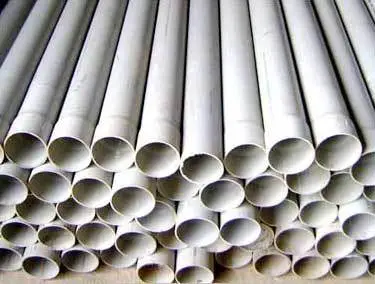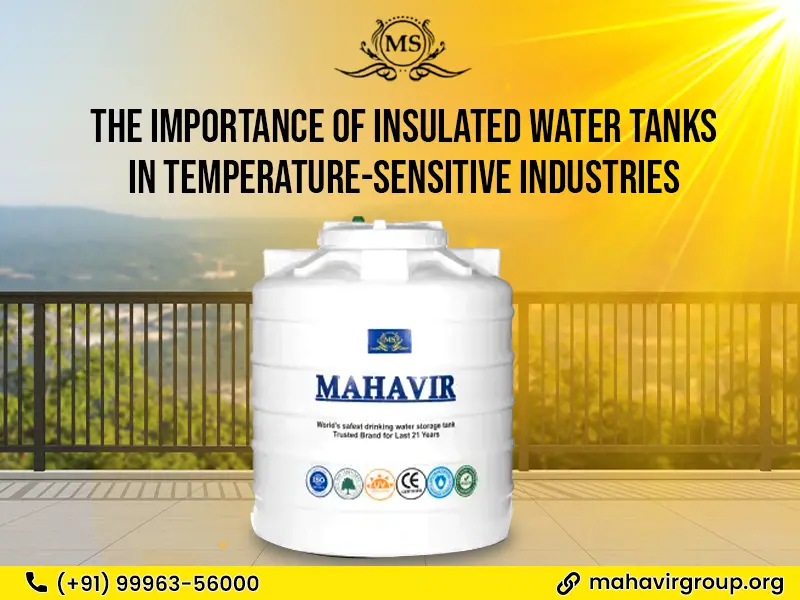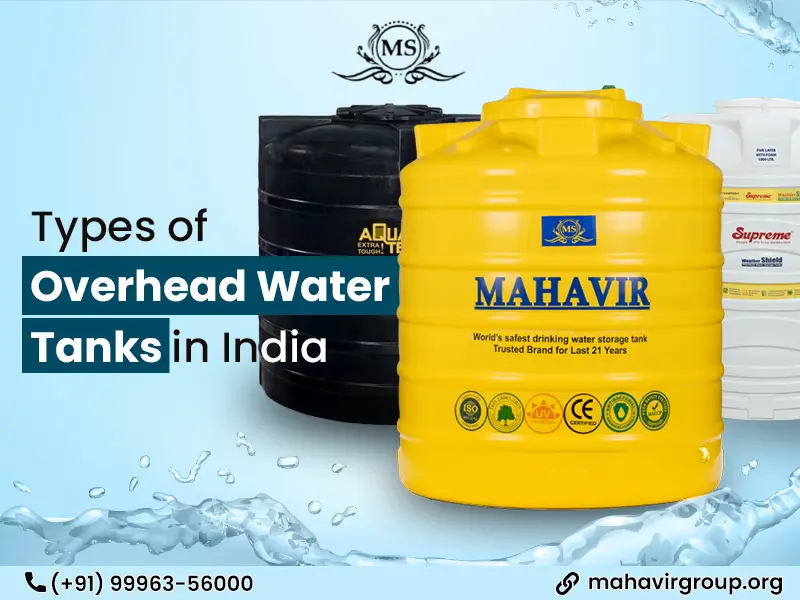Proper irrigation is critical. They help to maintain a lush, green garden. To water your garden landscape, sprinkler system is a good choice.
Water efficiency can be improved with effective sprinkler system adjustments.
They reduce waste and ensure the plants get the right amount of moisture.
Why You Need To Adjust For Different Soil Types?
Table of Contents
ToggleEach soil type is different. They absorb and retain water in different ways. Hence, it’s crucial to adjust your irrigation practices to match different variations.
It is also important to understand the behavior of the three most common soil types.
- Clay Soil: They are dense and compact. This often prevents water from draining easily. As a result, water tends to congregate on the surface. If you water too fast or in excess dosage, they lead to runoff.
- Sandy Soil: They drain rather quickly. This does not allow the soil to hold water well. Hence, frequent watering in short spurts is required. This will make sure the plants get adequate moisture.
- Loam Soil: They are good for plant growth as they maintain a balanced texture. This means they retain moisture without becoming waterlogged. Additionally, loamy soil needs moderate watering.
By making for each soil type sprinkler system adjustments, water can be effectively distributed as well as absorbed. This will reduce waste of water as well as stress on the plants.
Sprinkler Settings For Clay Soil
Clay soil has low permeability. They need specific watering adjustments.
You need to consider few aspects when watering with a sprinkler system.
Slow Down Watering
Clay soil absorbs water slowly. Hence it’s important to water in smaller increments. In case you water too quickly, it will run off before it can be absorbed by the soil. To adjust this issue, set your sprinklers to run for shorter periods. However it should be done frequently. This will allow the water to seep gradually into the soil.
Lower Water Pressure
Applying excess of pressure with sprinkler heads can cause the water to run off. This can especially occur in clay soil. You need to lower the water pressure on your sprinkler system. This will allow the water to distribute more evenly and in the bargain prevent runoff. Make sure to check your sprinkler pressure settings so that they are suitable for clay soil.
Adjusting Sprinkler Heads For Even Coverage
Clay soil tends to develop dry spots. This occurs due to uneven water distribution.
The most effective sprinkler system adjustments are:
- Position carefully the sprinkler heads. They cover the area uniformly.
- Rotate or elevate sprinkler heads. This will make sure water lands on the ground more evenly.
- Use sprinkler heads with adjustable spray patterns. They can be useful. You can modify the radius and spray angle for optimal coverage.
Watering Techniques For Sandy Soil
Watering sandy soil is a challenge. This is due to its rapid drainage. When water passes rather too quickly through sandy soil they get soaked in the soil. This leaves the plants without water and left thirsty.
The following tips show how to water properly with a sprinkler system for sandy soil.
- Water more frequently. But they need to be done in smaller watering cycles as sandy soil drains quickly. Like for instance, first water for 30 minutes, then for 10-15 minutes, take a break for short while, and later water again. They keep the sandy soil moist and allow absorption of water more efficiently.
Customize Sprinkler Spray Patterns
Water should be distributed across the area in a uniform manner.
Customizing sprinkler spray patterns will help to achieve the same:
Choose sprinkler heads with a fine mist. Else you can spray to prevent water from evaporating quickly or run off.
Customize spray nozzles with adjustable patterns to your lawn’s size and shape. This ensures the water reaches the plants roots without in any way oversaturating areas where water runoff.
Deep watering allows water to reach the root zone where it is required the most. The sprinkler system can be adjusted by running it for longer periods of time. But they need to be done with less frequency. They allow the water to infiltrate the soil deep, before next watering session round.
Optimizing Sprinkler Water Distribution
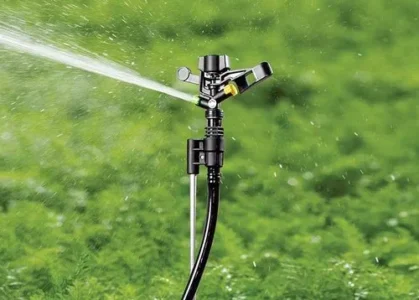
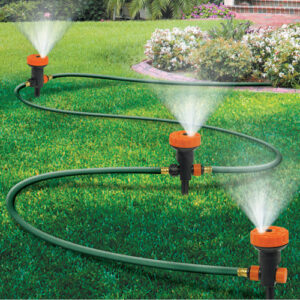
Optimizing sprinkler water distribution is critical. It does not matter what your soil type is. They ensure the whole of your landscape receives the right amount of water.
The following techniques will help to optimize water distribution.
- Use A Drip Irrigation System: Drip irrigation systems can effectively distribute water with a range of soil types in gardens and flower beds. They deliver water to the base of the plants directly. This will reduce waste of water and ensure the soil is moist evenly.
- Check For Coverage Overlap: Make sure when setting your sprinklers the spray patterns overlap slightly. They ensure complete coverage. In case the sprinkler heads are too far apart, some areas may not get sufficient water. Overlapping too many results in some areas get excess of moisture. This can especially occur in clay soil.
- Use Sprinkler Timers: It is an effective way to watering duration and frequency. Timers can be programmed to water during off-peak hours like early morning or late evening. They help to reduce water evaporation and maximize soil absorption. They are useful especially for soil types like sandy soil.
Soil-specific Irrigation Solutions
Soil test should be taken when customizing for specific soil types the irrigation system. This will help to know its composition better. They also help to determine if the soil needs to be amended. That is, amended with organic materials, sand, or other amendments to improve water retention or drainage.
The following soil-specific irrigation solutions will guide you the right way.
For Clay Soil
- Aeration: Aerating the soil is useful. They help to alleviate compaction. This will allow water to penetrate into the soil deeper and also more evenly across it. They also create small holes in the soil. This promotes root growth and improves water absorption.
- Amendments: When organic matter like compost is added, they improve the clay soil’s structure. And make it more porous and better to hold moisture.
For Sandy Soil
- Mulching: Mulch applied around plants helps it retain in sandy soil moisture. This reduces water evaporation. They also help water to stay longer in the soil.
- Soil Amendment: Add organic matter. Like compost or peat moss. They help the soil to better retain water and nutrients.
For Loamy Soil
Loamy soil has an ideal structure for most plants. They require minimal adjustments. However it benefits from routine maintenance. Aeration and composting are also useful. They keep the soil well-drained. At the same time preserve moisture.
Sprinkler Set Maintenance Tips
Maintain a sprinkler system properly. This will ensure its long-term efficiency. Additionally, proper care will also ensure it works properly and can be adjusted easily for soil type variations.
Here are some sprinkler set maintenance tips.
- Regularly Inspect Sprinkler Heads: Check for clogged or damaged sprinkler heads. They can cause poor water distribution. To prevent this, clean out debris and replace faulty heads, if any.
- Test Water Pressure: Low water pressure can lead to inadequate or poor irrigation. High water pressure on the other hand can cause runoff. So, check your sprinkler system’s pressure regularly and also adjust it as per the specific needs of your soil type.
- Seasonal Adjustments: Watering needs of your plants in the spring and summer will change as the seasons change. You may have to water more and for longer periods. During spring and winter months, reduce watering to match cooler temperatures and decreased plant growth.
- Check For Leaks: Leaks in the sprinkler heads or pipes results in waste of water. This leads to higher water utility bills. So, regularly inspect your sprinkler system for leaks and carry out required repairs.
- Clear Debris: Make sure to clear away around your sprinkler heads debris like leaves, dirt, and other debris. They will ensure water gets distributed to the soil properly.
Conclusion
Knowing your soil type and sprinkler system adjustments will help you to maintain your lawn and garden better.
You can by customizing sprinkler spray patterns, optimizing water distribution, and following proper sprinkler set maintenance tips, ensure your irrigation system will provide efficient watering that’s tailored to your soil’s unique characteristics. They will also ensure reduced water bills.





